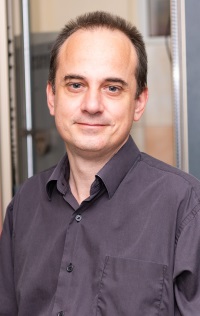The Laboratory of Functional Polymeric Materials was established by Order No.177b dated 18.06.2020 with the goal of fulfilling the state assignment of the Ministry of Science and Higher Education of the Russian Federation on the project 0718-2020-0036 “Highly filled thermally conductive composites based on thermoplastics” (topic 3366025). The laboratory is a part of Research Center of Composite Materials (CCM) and conducts research in cooperation with the Research Equipment Sharing Center “Electrophysics” of Institute of Electrophysics, Ural Branch, Russian Academy of Sciences (IE RAS) using modern methods of preparation and analysis of finely dispersed and nanoscale inorganic fillers providing heat-conductive properties of polymeric composites.
Activities of the Laboratory
The Laboratory of Functional Polymeric Materials conducts research on highly filled polymeric composites with increased thermal conductivity and durability. In general, the laboratory’s activities are directed at the establishment of fundamental regularities of structure formation, allowing for production of highly filled polymer composites with increased thermal conductivity and durability. More specifically, the lab conducts research on the following topics:
- effect of the type, content and morphology of fillers and material production modes on the thermal conductivity and mechanical properties of highly filled polymer based composites containing metallic, ceramic and carbon fillers;
- possibility of increasing the thermal conductivity of the material by combining thermally conductive fillers of different nature;
- correlation between the produced structure of highly filled composites and their thermophysical and mechanical properties;
- the role of mechanoactivation treatment in the improvement of the thermophysical characteristics of highly filled composites;
- correlation between the parameters of thermally conductive fillers and thermophysical and mechanical characteristics of highly filled composites;
- synergistic effects of joint use of thermally conductive fillers of different nature on the same material;
- researching percolation threshold of filler content in complexly filled polymer material with different filler morphology, including using methods of mathematical modeling;
- principles of composite formation providing for optimal combination of thermophysical properties and durability of the filler’s network nanostructures in polymer matrix.
